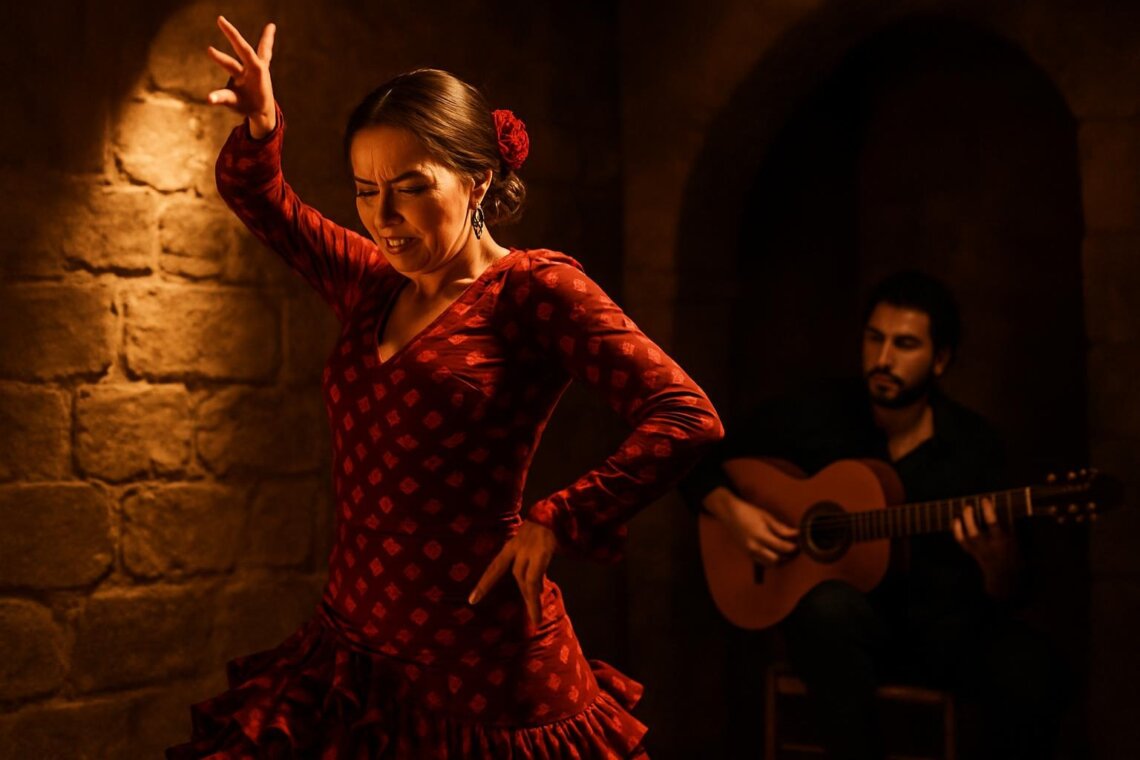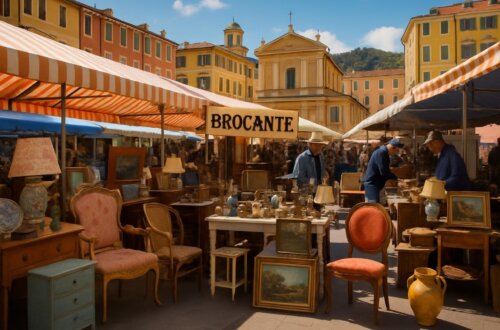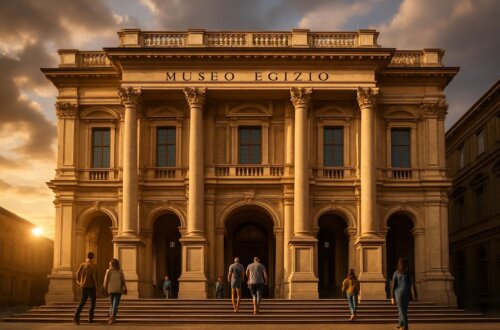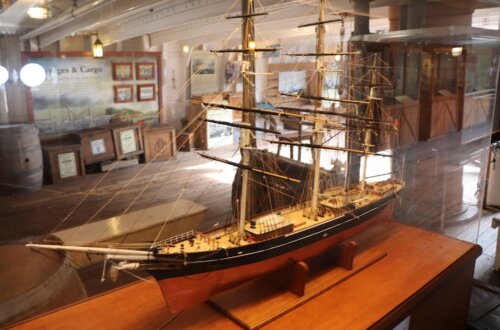
Flamenco Shows in Sevilla: The Ultimate Guide to Experiencing Authentic Andalusian Passion
Flamenco Shows in Sevilla: The Ultimate Guide to Experiencing Authentic Andalusian Passion
Introduction
In the heart of Andalusia, where narrow cobblestone streets echo with the rhythmic clapping of palmas and the soul-stirring cry of cante, lies Sevilla—the undisputed birthplace of flamenco. This captivating city doesn’t just host flamenco shows; it breathes, lives, and embodies the very essence of this UNESCO-recognized art form. Here, flamenco shows Sevilla offers aren’t mere tourist attractions—they’re intimate glimpses into the Andalusian soul, where centuries of Moorish, Jewish, Romani, and Spanish cultures converge in explosive displays of human emotion.
As the cultural heart of flamenco, Sevilla presents an unparalleled opportunity to witness authentic performances that have remained largely unchanged for generations. Whether you’re drawn by the haunting melodies of a guitar echoing through a historic tablao or the spontaneous burst of dance in Triana’s winding streets, this comprehensive guide will navigate you through the city’s rich flamenco landscape. We’ll explore the best venues, decode the cultural significance, and provide insider tips to ensure your flamenco experience in Sevilla transcends ordinary entertainment to become a transformative cultural immersion.
Why Sevilla is the Capital of Flamenco
Understanding the history of flamenco in Sevilla requires delving into the city’s complex cultural tapestry. Flamenco emerged in the 18th century from Sevilla’s working-class neighborhoods, particularly in Triana, where Romani communities, Moorish refugees, Jewish merchants, and Andalusian laborers created a unique artistic fusion born from shared struggles and celebrations.
The art form’s roots run deepest in Sevilla’s historic quarters, where economic hardship and social marginalization fostered an intensely emotional means of expression. Unlike other Spanish regions that adopted flamenco later, Sevilla witnessed its organic birth, nurturing legendary performers who established the fundamental techniques and emotional depth that define authentic flamenco today. The city’s influence became so profound that when UNESCO declared flamenco an Intangible Cultural Heritage of Humanity in 2010, they specifically recognized its Andalusian origins.
What distinguishes Sevilla’s flamenco scene is its unwavering commitment to authenticity. While other tourist destinations might offer commercialized interpretations, Sevilla maintains its authentic flamenco experience through generations of families who have preserved traditional techniques, passing them down through informal apprenticeships in neighborhood peñas and family gatherings. Local performers aren’t actors playing roles—they’re inheritors of a living tradition, each bringing personal history and genuine emotion to every performance.
The city’s flamenco authenticity is further reinforced by its active community of aficionados who attend shows not as tourists but as knowledgeable enthusiasts who demand artistic integrity. This discerning audience ensures that venues maintain high standards, creating an environment where both performers and spectators contribute to the art form’s continued evolution while respecting its foundational elements.

Types of Flamenco Shows in Sevilla
Navigating Sevilla’s diverse flamenco landscape requires understanding the distinct types of venues and their unique characteristics. Each setting offers different advantages, catering to various preferences and budgets while maintaining artistic integrity.
Tablaos Flamencos represent the most traditional and intimate flamenco experience available. These small venues, typically accommodating 50-100 guests, create an almost sacred atmosphere where performers and audience share the same breathing space. The proximity allows visitors to witness every subtle facial expression, hear each finger’s contact with guitar strings, and feel the emotional intensity radiating from dancers. Tablao flamenco Sevilla venues typically charge between €25-45 per person, with premium locations commanding higher prices. The intimate setting encourages audience participation through palmas (rhythmic clapping), creating a communal experience that tourist shows cannot replicate.
Peñas Flamencas offer the most authentic experience for serious aficionados. These local clubs, primarily attended by Sevillanos, host informal gatherings where established artists and emerging talents share the stage. Entry fees are minimal (€5-15), but performances are unpredictable and entirely in Spanish. Visitors might witness legendary masters alongside neighborhood children learning their craft, experiencing flamenco as a living community tradition rather than staged entertainment.
Theatrical Performances provide polished productions in larger venues like Teatro de la Maestranza or Teatro Central. These shows feature elaborate costumes, sophisticated lighting, and choreographed pieces that showcase flamenco’s artistic evolution. Tickets range from €15-60, appealing to visitors seeking professional productions with English-language programs explaining the cultural context.
Street Performances emerge spontaneously throughout Sevilla, particularly in Triana, Plaza de España, and the historic center. While free, these impromptu shows offer unpredictable quality and duration. However, encountering authentic street flamenco—where locals gather around a guitarist and spontaneous dancing erupts—provides magical moments that rival any ticketed performance.

Best Flamenco Shows and Venues in Sevilla
Selecting the best flamenco shows Sevilla requires balancing authenticity, quality, and accessibility. After extensive research and local consultation, these venues represent the pinnacle of Sevilla’s flamenco offerings.
Tablao El Arenal stands as Sevilla’s most internationally recognized venue, attracting performers who’ve graced stages from Madrid to New York. Located near the cathedral, this intimate space accommodates just 60 guests, ensuring every seat offers excellent views. Daily shows at 8:30 PM and 10:30 PM feature rotating casts of established artists, with ticket prices ranging from €35-45. The venue’s reputation for artistic excellence means advance booking is essential, especially during spring and fall seasons.
La Casa del Flamenco occupies a beautifully restored 15th-century building in the Santa Cruz neighborhood, creating an atmospheric backdrop that enhances the performance’s emotional impact. This family-friendly venue offers earlier shows (7:30 PM) alongside traditional late-night performances. Their commitment to education includes brief introductions explaining flamenco’s cultural significance, making it ideal for first-time visitors. Tickets cost €30-40, with group discounts available.
Los Gallos Tablao Flamenco has maintained its reputation since 1966, earning respect from local aficionados and international critics alike. This Plaza de Santa Cruz venue preserves traditional tablao atmosphere while featuring both established masters and promising newcomers. Their 9:00 PM shows run approximately 90 minutes, priced at €35-42. The venue’s longevity speaks to its consistent quality and authentic approach.
Museo del Baile Flamenco, created by renowned dancer Cristina Hoyos, combines museum exhibits with live performances in a unique cultural experience. Afternoon shows (5:00 PM) cater to families, while evening performances (8:00 PM and 9:30 PM) maintain traditional intensity. The museum context provides valuable background knowledge, enhancing appreciation for the subsequent live performance. Combined tickets cost €25-35.
Casa de la Memoria offers perhaps the most atmospheric setting, housed in a 15th-century palace with traditional Andalusian architecture. The courtyard setting creates intimate connections between performers and audience, while the venue’s commitment to featuring local artists ensures authentic presentations. Shows run daily at 9:00 PM, with tickets priced at €18-25, making it accessible for budget-conscious travelers seeking quality experiences.
What to Expect at a Flamenco Show in Sevilla
Understanding flamenco’s components enhances appreciation for this complex art form. Traditional flamenco dance Sevilla performances integrate four essential elements, each requiring years of training to master.
Toque (guitar playing) provides the rhythmic foundation and melodic framework supporting the entire performance. Flamenco guitarists don’t simply accompany—they engage in musical conversations with singers and dancers, responding to emotional cues and creating spontaneous variations. The guitar’s percussive slaps and intricate fingerpicking techniques create textures ranging from whisper-soft accompaniment to driving rhythmic propulsion.
Cante (singing) carries flamenco’s emotional weight through deeply personal lyrics exploring themes of love, loss, social injustice, and spiritual longing. Flamenco singers employ unique vocal techniques, including melismatic passages and microtonal inflections that can sound foreign to untrained ears but convey profound emotional meaning. The relationship between singer and audience is intensely personal, with successful cantaores creating intimate connections that transcend language barriers.
Baile (dance) transforms internal emotion into external expression through precisely controlled movements that appear spontaneous but require incredible technical skill. Female dancers utilize intricate footwork, expressive arm movements, and dramatic use of traditional dresses and shawls. Male dancers focus on powerful footwork and percussive movements that complement rather than compete with their female counterparts.
Palmas (rhythmic clapping) involves the entire community, creating polyrhythmic patterns that support and enhance the performance. Audience members are often encouraged to participate, though proper palmas require understanding complex rhythmic cycles called compás.
The concept of duende—that indefinable moment when technical skill transcends into spiritual expression—remains central to authentic flamenco. Duende cannot be scheduled or guaranteed; it emerges spontaneously when performers, music, and audience achieve perfect emotional synchronization. These magical moments justify flamenco’s reputation as one of humanity’s most powerful art forms.
Most performances last 60-90 minutes, with brief intermissions allowing audience reflection and performer rest. Dress codes are generally smart casual, though some upscale venues prefer business attire. Photography during performances is typically prohibited to maintain artistic focus and respect performer concentration.

When and Where to See Flamenco in Sevilla
Timing your visit to coincide with Sevilla’s flamenco festivals Sevilla can dramatically enhance your experience, though excellent performances occur year-round. The city’s flamenco calendar offers distinct seasons, each providing unique advantages for different types of visitors.
Spring (March-May) represents peak season for flamenco tourism, culminating in the legendary Feria de Abril. This week-long celebration transforms Sevilla into a flamenco paradise, with impromptu performances erupting throughout the city. Hotel prices soar and advance reservations become essential, but the city’s infectious energy and numerous outdoor performances create unforgettable experiences. The Feria’s casetas (private pavilions) host some of the most authentic flamenco gatherings, though access requires local connections or special arrangements.
Fall (September-November) offers ideal conditions for flamenco exploration, with comfortable temperatures and the biennial Bienal de Flamenco (held in even-numbered years). This internationally recognized festival attracts world-class performers and serious aficionados, elevating the city’s already high artistic standards. Even during non-Bienal years, fall’s pleasant weather encourages outdoor performances and extended evening strolls through flamenco neighborhoods.
Winter (December-February) provides the most intimate flamenco experience, with smaller crowds allowing closer interaction with performers and venue staff. Many tablaos offer special programs during holiday seasons, while reduced tourist numbers create opportunities for spontaneous conversations with local artists. Though some street performance decreases due to weather, indoor venues maintain full schedules with potentially more personal experiences.
Triana flamenco deserves special attention as the neighborhood where the art form achieved its purest expression. This historic area across the Guadalquivir River from Sevilla’s center maintains strong flamenco traditions despite gentrification pressures. Evening walks through Triana’s narrow streets often reveal informal gatherings where locals practice and share their art. The neighborhood’s ceramic workshops, traditional bars, and family-run tablaos preserve authentic atmosphere that tourist-focused areas sometimes lack.
The historic center, particularly around Plaza de Santa Cruz and the cathedral area, concentrates many commercial tablaos within walking distance. This convenience allows visitors to compare different venues and potentially attend multiple performances during extended stays. However, venture beyond tourist zones to discover neighborhood bars where locals gather for informal singing sessions and impromptu dancing.
Tips for Booking Flamenco Shows in Sevilla
Successfully booking flamenco show tickets Sevilla requires strategic planning and understanding of local practices. Peak season demand often exceeds capacity, making advance reservations essential for popular venues.
Book flamenco Sevilla experiences directly through venue websites when possible, as this often provides better prices and more flexible cancellation policies than third-party platforms. Many establishments offer email confirmations in multiple languages and accept international credit cards, though calling during Spanish business hours (10 AM-2 PM, 5 PM-8 PM) sometimes yields better availability information and potential discounts for groups or extended stays.
Consider purchasing tickets through reputable tourism platforms like GetYourGuide or Viator for package deals combining multiple experiences. These platforms often include transportation, dinner reservations, or cultural context that enhance the overall experience, though individual venue booking typically offers better value for straightforward show attendance.
Smaller venues provide more authentic experiences but require earlier booking due to limited capacity. Arrive 15-30 minutes before show time to secure optimal seating, as many tablaos don’t assign specific seats. Front-row positions offer incredible intimacy but can feel overwhelming for first-time visitors unused to flamenco’s emotional intensity.
Combining flamenco with traditional tapas creates a complete Andalusian cultural experience. Many venues offer dinner packages, though these sometimes provide tourist-oriented rather than authentically local cuisine. Consider dining at nearby traditional bars before attending shows, allowing time for digestion and cultural immersion while exploring Sevilla’s remarkable tapas scene.
Group bookings (6+ people) often receive discounts, making shared experiences more affordable while creating communal energy that enhances flamenco appreciation. Contact venues directly to discuss special requirements, language preferences, or cultural context explanations that can enrich understanding for international visitors.

Beyond the Stage: Living the Flamenco Spirit in Sevilla
Experiencing flamenco culture Sevilla extends far beyond attending performances, offering numerous opportunities for deeper cultural engagement that transform casual tourism into meaningful cultural exchange.
Learn flamenco Sevilla through workshops and classes that welcome beginners regardless of dance background. Escuela de Flamenco Arte y Compás offers intensive weekend workshops combining basic technique instruction with cultural history lessons. Professional dancers lead these sessions, providing insights into flamenco’s emotional and technical demands while creating safe spaces for cultural exploration. Prices range from €25-40 per workshop, with multi-day intensives available for serious students.
Christina Heeren Foundation provides academic-level flamenco education, attracting international students seeking comprehensive understanding of the art form’s cultural significance. Their programs combine performance training with anthropological and historical studies, creating well-rounded appreciation for flamenco’s social and artistic importance.
Flamenco fashion shopping reveals the art form’s influence on Andalusian aesthetics. Specialized boutiques in the Santa Cruz area offer authentic flamenco dresses, shoes, and accessories used by professional performers. While complete outfits can cost hundreds of euros, smaller accessories like fans, jewelry, or shawls provide meaningful souvenirs that connect visitors to flamenco’s visual traditions.
El Corte Inglés department store’s flamenco section provides more affordable options alongside professional-grade equipment, allowing visitors to compare quality levels and understand the craftsmanship behind authentic flamenco accessories. Many items feature hand-painted designs and traditional construction techniques that represent generations of artisanal knowledge.
Museums dedicated to flamenco culture provide essential context for live performances. The Centro Flamenco Fosforito offers extensive exhibits exploring flamenco’s evolution, regional variations, and social significance. Interactive displays allow visitors to explore different singing styles, rhythmic patterns, and instrumental techniques that inform live performance appreciation.
The Flamenco Archive at the Andalusian Center of Flamenco preserves historical recordings, photographs, and documents that trace flamenco’s development from its origins to contemporary innovations. Researchers and serious enthusiasts can access materials that reveal the art form’s continuous evolution while maintaining core traditional elements.
Conclusion
Sevilla’s position as the world’s flamenco capital stems not from tourism marketing but from centuries of authentic cultural development that continues thriving today. The city offers unparalleled access to this UNESCO-recognized art form through intimate tablaos, community peñas, and spontaneous street performances that maintain their emotional authenticity despite increasing international recognition.
Your flamenco journey in Sevilla should extend beyond passive observation to active cultural participation. Whether attending traditional tablao performances, exploring historic Triana neighborhoods, or engaging with local flamenco communities through workshops and cultural exchanges, the city provides endless opportunities for meaningful artistic encounter.
The experience of witnessing authentic flamenco in its birthplace creates lasting memories that transcend typical tourist activities. The art form’s emotional depth, technical sophistication, and cultural significance offer insights into Andalusian identity that inform broader understanding of Spanish culture and human artistic expression.
Planning your visit during festival seasons enhances the experience but isn’t essential—Sevilla’s flamenco community maintains year-round activity that welcomes respectful visitors seeking genuine cultural understanding. The key lies in approaching flamenco with openness to emotional vulnerability and appreciation for artistic traditions that have survived and evolved across centuries.
Ready to feel the passion of Andalusia? Book your flamenco show in Sevilla today and prepare for an transformative cultural experience that will resonate long after the final guitar chord fades into the Andalusian night.




